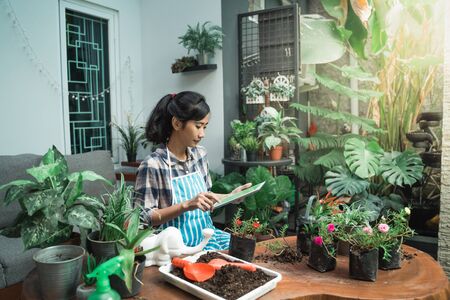Understanding Common Pests and Diseases in Hydroponics
In the United States, hydroponic gardening is gaining momentum for its resource efficiency and eco-friendly approach. However, just like traditional soil-based systems, hydroponic growers face unique challenges from pests and diseases. The most common culprits in American hydroponics include aphids, spider mites, whiteflies, thrips, and fungus gnats. On the disease front, root rot caused by pathogens like Pythium and Fusarium, as well as powdery mildew and downy mildew, are frequent foes. These pests and diseases thrive in soilless environments primarily due to the consistent moisture and nutrient-rich conditions that make hydroponic setups attractive breeding grounds. Recognizing early signs—such as leaf discoloration, stunted growth, wilting, or visible insects—is crucial for sustainable management. Quick identification allows growers to respond with eco-conscious solutions before infestations spiral out of control, protecting both crop yields and the environment.
2. Preventive Strategies for a Healthy Growing System
Building a resilient hydroponic environment starts with smart, eco-friendly design choices that prioritize prevention over reaction. By focusing on proactive measures, you not only minimize the risk of pest and disease outbreaks but also strengthen your system’s natural defenses—promoting both plant health and environmental sustainability.
Eco-Friendly Preventive Measures
One of the most effective ways to keep pests and diseases at bay is by designing your hydroponic setup with prevention in mind. Consider these sustainable strategies:
| Preventive Measure | Sustainable Benefit | Implementation Tip |
|---|---|---|
| Proper Airflow | Reduces humidity and discourages mold, mildew, and airborne pests | Install fans or vents; avoid overcrowding plants |
| Clean Water Sources | Limits pathogen introduction and supports healthy root development | Use filtered or treated water; clean reservoirs regularly |
| Disease-Resistant Plant Varieties | Less reliance on chemical treatments; more robust growth | Select varieties bred for resistance to common local issues |
| Sterile Growing Media | Prevents soil-borne diseases from entering the system | Choose inert media like coco coir, perlite, or rockwool; sterilize between crops |
| Sanitation Protocols | Keeps pathogens from spreading throughout your system | Disinfect tools and surfaces after each use; implement “clean hands” policies |
System Resilience through Proactive Design
A well-designed hydroponic system is inherently less vulnerable to infestations. Incorporating features like separated grow zones can isolate potential outbreaks, while using companion planting techniques—such as growing basil near tomatoes—can naturally repel certain pests without chemicals.
Promoting Biodiversity and Balance
Diversifying your crop selection boosts overall system health and makes it harder for pests or diseases to spread unchecked. By rotating crops and including beneficial plants, you create an ecosystem where nature helps you maintain balance, reducing the need for synthetic interventions.
The Bottom Line: Prevention Pays Off
Taking a proactive approach not only protects your hydroponic garden but also aligns with sustainable values important to American growers. Investing time and effort in these preventive strategies leads to healthier plants, fewer headaches, and a greener footprint for your operation.
![]()
3. Spotting the Signs: Early Detection and Monitoring
Early detection is crucial for keeping your hydroponic system healthy and resilient against pests and diseases. By catching problems early, you can prevent minor issues from turning into full-blown outbreaks that threaten your crops and waste resources. Start by establishing a routine inspection schedule—check your plants daily if possible, focusing on leaf color, stem health, and root appearance. Look for natural indicators such as yellowing leaves, stunted growth, or unusual spots that can signal early stress or infestation.
Routine Inspection Methods
Use simple, sustainable tools like magnifying glasses or smartphone macro lenses to get a close look at plant surfaces without disturbing the ecosystem. Sticky traps made from recycled materials can help monitor flying insect populations in an eco-friendly way. Document your observations with photos and notes so you can track changes over time and spot subtle patterns.
Sustainable Monitoring Practices
Integrate low-impact solutions such as companion planting within your hydroponic setup—herbs like basil or mint can act as natural pest deterrents and alert you to imbalances before they become severe. Consider installing non-toxic monitoring devices, like blue or yellow sticky cards, which are effective yet safe for both your plants and the environment.
Empowering Proactive Action
By combining hands-on observation with sustainable monitoring tools, you empower yourself to act quickly and minimize intervention. This proactive approach not only protects your harvest but also supports long-term environmental stewardship, reducing reliance on harsh chemicals and promoting a healthier hydroponic ecosystem overall.
4. Natural and Organic Solutions for Pest and Disease Control
Maintaining a healthy hydroponic system doesn’t mean reaching for harsh chemicals at the first sign of trouble. In fact, many American growers are shifting toward natural and organic solutions that not only protect plants but also safeguard beneficial organisms and the broader environment. Below, you’ll discover sustainable methods to fight pests and diseases without compromising your eco-conscious values.
Beneficial Insects: Nature’s Pest Patrol
One of the most effective and environmentally friendly approaches is introducing beneficial insects into your hydroponic setup. These tiny allies, such as ladybugs, lacewings, and predatory mites, actively hunt down common pests like aphids, spider mites, and whiteflies. By establishing a balanced ecosystem, you can keep pest populations in check without resorting to synthetic pesticides.
Popular Beneficial Insects for Hydroponics
| Insect | Target Pests | Notes |
|---|---|---|
| Ladybugs | Aphids, mealybugs | Release near affected plants; non-toxic to humans |
| Lacewings | Aphids, thrips | Excellent for early intervention; easy to purchase online |
| Predatory Mites | Spider mites | Effective in warm, humid environments |
Neem Oil: An Organic Powerhouse
Neem oil has gained widespread approval from organic certifying bodies in the United States and is well-known for its ability to combat a wide range of pests and fungal diseases. Derived from the neem tree, this oil disrupts pest life cycles while being gentle on your crops and the environment. Simply dilute according to label directions and apply with a spray bottle for best results.
Homemade Sprays: Simple and Safe Solutions
If you prefer DIY remedies, several homemade sprays can deter pests and prevent disease outbreaks. Common recipes include mixing mild liquid soap with water or creating garlic- or pepper-based sprays. These options are cost-effective, easy to make from kitchen ingredients, and safe for both plants and people when used correctly.
Sample Homemade Pest Spray Recipe:
- 1 quart water
- 1 teaspoon mild liquid soap (unscented)
- A few drops of vegetable oil (optional for stickiness)
Mix ingredients in a spray bottle and apply directly to plant leaves where pests are visible. Always test on a small area first to ensure there’s no plant sensitivity.
By integrating these chemical-free remedies—beneficial insects, neem oil, and homemade sprays—you can manage hydroponic pests and diseases effectively while upholding American-approved organic standards and protecting our shared ecosystem.
5. Creating a Balanced Hydroponic Ecosystem
Building a resilient hydroponic environment goes beyond simply reacting to pests and diseases—it’s about proactively designing your system to discourage them in the first place. In the U.S., sustainable agriculture standards increasingly encourage growers to mimic natural ecosystems, even within soilless setups. One of the most effective ways to achieve this is by fostering biodiversity within your hydroponic garden.
Biodiversity: Nature’s Defense Mechanism
A diverse ecosystem naturally regulates pest populations and disease outbreaks. Introducing multiple plant varieties creates a less predictable habitat for pests, making it harder for any single species to dominate. For example, alternating leafy greens with herbs like basil or mint can help repel common hydroponic invaders such as aphids and whiteflies. This approach aligns with regenerative practices promoted by organizations like the USDA and supports ecological resilience.
Companion Planting in Hydroponics
Though companion planting is traditionally associated with soil gardening, many principles translate well to hydroponics. Consider growing marigolds alongside tomatoes or peppers; marigolds emit compounds that deter nematodes and other harmful insects. Integrating beneficial plants together not only boosts overall plant health but also reduces your reliance on chemical controls—supporting both environmental stewardship and food safety.
Regenerative Practices for Long-Term Success
Implementing regenerative strategies—such as crop rotation (swapping out crops between cycles), using organic biostimulants, and introducing predatory insects like ladybugs—further enhances your system’s defense mechanisms. These methods work in harmony with U.S. sustainability guidelines by reducing input needs and increasing long-term productivity. Ultimately, when you prioritize ecosystem balance, you create an environment where pests and diseases struggle to gain a foothold, leading to healthier crops and a more sustainable future.
6. When to Use Targeted Intervention Safely
Even in the most carefully managed hydroponic systems, there may come a time when eco-friendly home remedies and cultural practices are not enough to keep pests or diseases at bay. In these cases, it’s important to know how to responsibly integrate targeted interventions—such as store-bought solutions or professional help—while maintaining your commitment to sustainability.
Evaluating Store-Bought Solutions
Before purchasing any pest control product, carefully read the label for ingredients and certification marks. Look for OMRI-listed (Organic Materials Review Institute) products or those certified by the EPA’s Safer Choice program. These options typically use botanically derived or low-toxicity active ingredients that break down quickly and pose less risk to beneficial insects and human health.
Selecting Environmentally Responsible Options
Choose solutions that target only the specific pest or disease you’re dealing with, rather than broad-spectrum pesticides. For example, insecticidal soaps, neem oil, and biological controls such as predatory mites can effectively address outbreaks without harming your system’s overall balance. Avoid products containing neonicotinoids or other persistent chemicals linked to pollinator decline and water contamination.
Timing and Application Tips
Apply any intervention during cooler parts of the day, following all label instructions to minimize runoff into water reservoirs and prevent plant stress. Spot-treat affected areas rather than blanket-spraying the whole setup. This approach reduces chemical use and protects your hydroponic ecosystem.
When to Call in Professional Help
If an infestation or disease outbreak persists despite your best efforts, seek out local professionals who specialize in sustainable integrated pest management (IPM). Ask about their methods and request that they use environmentally friendly products wherever possible. Many American extension services and eco-conscious pest control companies offer consultations tailored to hydroponic growers.
Staying Committed to Sustainability
Remember: The goal is not just quick eradication but long-term ecosystem health. By prioritizing targeted, low-impact interventions and collaborating with sustainability-minded professionals, you can safeguard both your crops and the planet—supporting a thriving hydroponic environment that aligns with American values of environmental stewardship.
7. Sustaining Success: Long-Term Maintenance and Community Resources
Building a resilient hydroponic system goes beyond defeating pests and diseases in the short term—it’s about fostering an environment where your plants, and you as a grower, can thrive for seasons to come. Consistent maintenance routines form the foundation of lasting plant health. This means regularly cleaning your reservoirs, sterilizing equipment, checking nutrient balances, and monitoring for early signs of trouble. These eco-friendly practices prevent pest outbreaks and disease cycles from taking hold.
Stay Curious: Ongoing Education
The world of hydroponics is always evolving. New sustainable techniques, organic solutions, and cutting-edge tools are constantly being developed. By staying informed through online courses, workshops, or university extension programs, you’ll be better equipped to recognize issues early and implement earth-friendly solutions that support both your crops and the planet.
Join Forces: Local Gardening Groups
Hydroponic gardening doesn’t have to be a solo adventure. Joining local gardening clubs or community groups—whether in-person meetups or online forums—connects you with fellow enthusiasts who share valuable insights specific to your region’s climate and common challenges. These communities often organize seed swaps, educational events, and even group purchases of sustainable supplies, making it easier to maintain green practices while building friendships along the way.
Adopt Sustainable Routines
Consistency is key for success. Set up a calendar for routine checks: inspect plants weekly for pests, rotate crops when possible to disrupt disease patterns, and use integrated pest management strategies that minimize chemical inputs. By composting plant waste responsibly or donating excess produce locally, you extend the positive impact of your hydroponic setup into the wider community.
Together Toward Greener Growth
Sustaining your hydroponic garden’s health is an ongoing journey—one rooted in learning, sharing knowledge, and caring for your system with intention. By embracing these maintenance habits and tapping into local resources, you help ensure not only your own harvest’s vitality but also contribute to a greener future for all.


